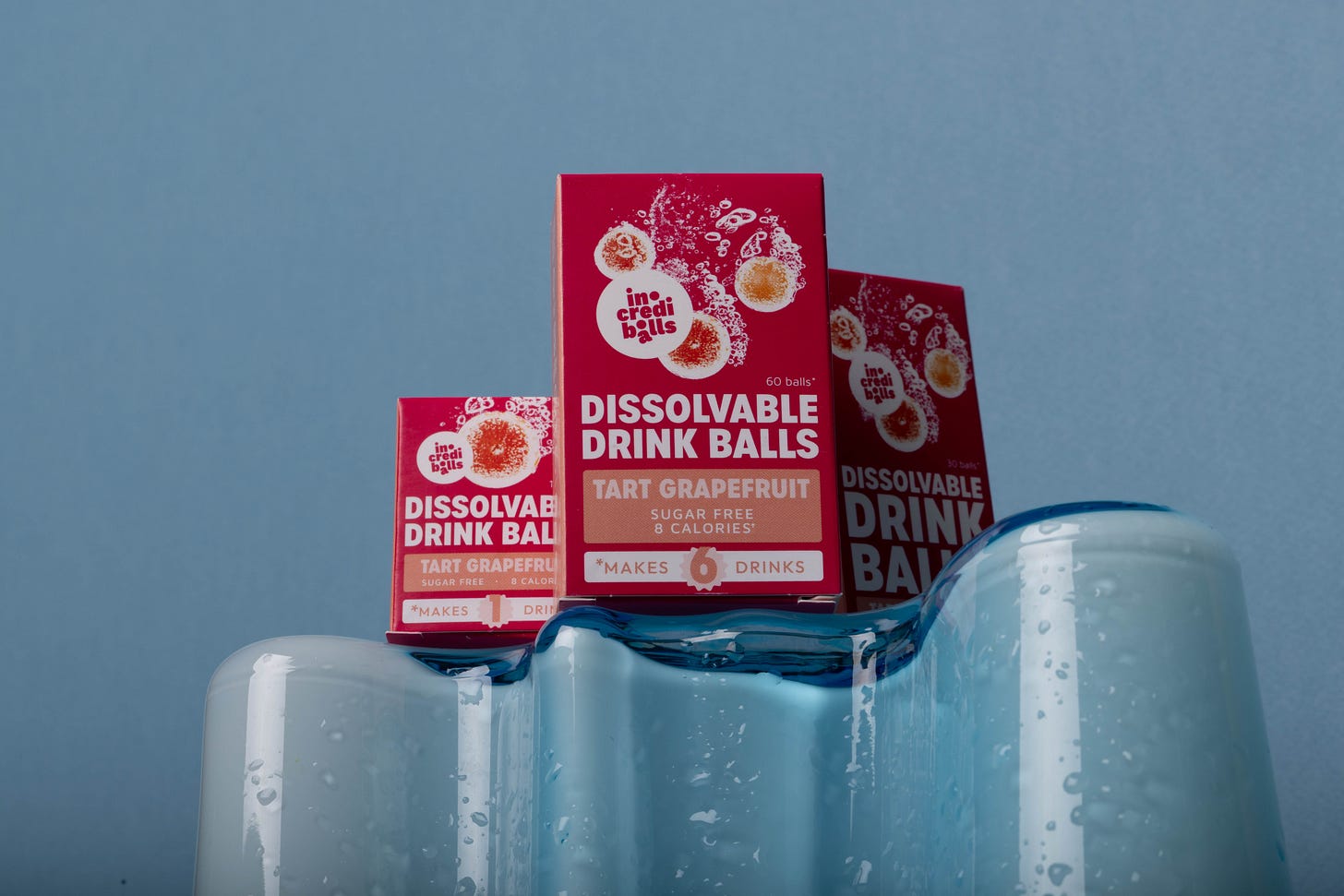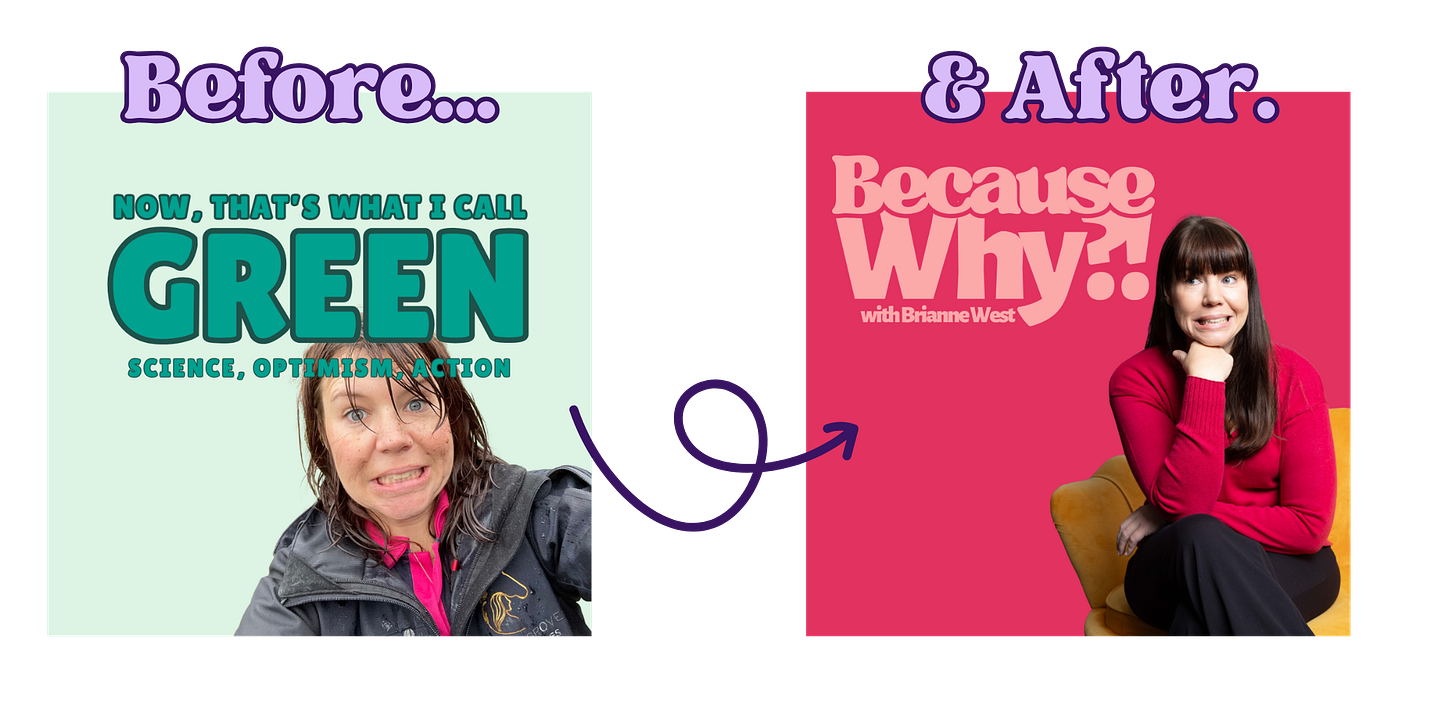Rebrands are a bit shit, but also a bit fun.
I've done a couple, so here are some of the things I've learned.
It’s not because I don’t like the logo - it’s dead cute.
I’m just bored of it.
How annoying is it that ‘consistency’ is considered an inviolable branding law. And I don’t disagree - you only build a brand through being consistent, but sheesh, all I want is a new fun logo every now and then and lots of colours.
But sometimes you do need to rebrand; for IP reasons, to keep up with the category, because of a major change in direction - all sorts of reasons.
And that can be a bit shit.
Something to stress before we get started though - it is so important to work out whether you truly do need to rebrand, or if there is another option. Because there are many more examples of rebrands going badly, than there are of ones that went well. And even if you follow all the rules, you still can’t truly know what will happen when it’s out there in the world.
I’ve done rebrands before. Once right after our first major capital raise.
That first time was with Ethique - which, fun fact, didn’t start life as Ethique at all. It was called Sorbet initially.
I wanted something that sounded fresh and delicious. Unfortunately, so did a billion other businesses around the world, and that name wasn’t trademark-able anywhere. Baby CEO Brianne made so many mistakes.
To add to the fun, I only discovered this slight issue a few days after we had closed our first equity crowdfunding round. We had just brought on about 152 new shareholders for about $200,000 and now I had to go out and tell them that, er, actually, we had to change the name before we could do the international expansion thing I was talking about. (They were all so good about it, as you’ll soon read.)
At the time, we had a tiny audience. I was convinced changing the name would lose all of them - and all that brand goodwill we’d built up would be gone. I couldn’t have been more wrong.
So here are some of my tips if you are managing a rebrand that I learned through that, and used to rebrand the podcast recently.
Lesson 1: Involve your people
When I realised Sorbet was doomed, I went to my new shareholders (somewhat nervously…) We brainstormed, they suggested loads of ideas, I made a shortlist, and then we extended it out to our customers to vote.
Months ago I found the old poll which was quite cool. Turns out I picked the one nobody liked. So yes, involve people, but don’t just hand over the decision.
You’re looking for inspiration, ideas, and to see what your audience likes. It’s not decision-by-committee (that’s called government and look how well that’s going…).
Lesson 2: Be transparent
Tell your audience what’s happening and why.
They’ll forgive a change if they understand the reason, but better yet, they’ll feel involved which is the golden ticket for creating community.
You are told by most marketing gurus to bring your people inside the office and show them behind the scenes. That isn’t just the good times - it’s also the trickier ones. Like when you’ve been telling them about this great drinks brand you’re building that will take on Coke but it keeps missing it’s launch date. (If you’re new here, that’s about the wonderful journey at
so far 🙃.)But if you front up and talk about what is going a little skew-whiff (wonky, if you’re not familiar with British slang), they’ll almost certainly appreciate it. Just look how well Whittakers and the Chocolate Wasp went down.
I could give you some examples of how not to handle a wonky moment, but we’d be here all day, because for some unfathomable reason the vast majorities of businesses still bugger it up.
Lesson 3: Check the boring stuff first
When you find the perfect name, it’s the best.
The birds sing louder. The sky seems bluer. Water tastes, er, less nitrate-y?
And then you check trademarks in your markets and realise you’ve got no chance.
That sucks, but it’s the process. It builds character I guess?
Try not to fall in love with a name before you’ve checked trademarks, domains, and social handles.
And for the love of your legal budget, don’t share your chosen name until you’ve got those bad boys locked up legally.
Lesson 4: Launch cleanly
Here is the the c-word again - your rebrand roll-out must be consistent.
Not something you drip out bit by bit trying to intrigue people. People get confused and you’re already asking them to remember a new name so that’s enough. Roll it out all at once; colours, logo, domains, social handles and so on.
When it comes to packaging and the product itself of course, that is an entirely different nightmare. This is why I am so thankful detail oriented supply-chain manager types exist. This part almost certainly won’t be consistent, and that is what it is. Sometimes retailers expect you to buy the old style stuff back, sometimes they don’t respond to you so you’ve got old and new on the shelf which is a look I guess, and sometimes they’re a delight to deal with and make your life easier. Each day is a lottery when you wholesale.
Just do what you can to make it clear, and don’t sweat what you can’t.
And if you think people will get confused, popping ‘formerly old company name’ in a few places doesn’t hurt either.
Lesson 5: Brace yourself
People by-and-large don’t like change. (I do not understand those people as the worst thing in the world is routine.)
The minute you change something, you’ll hear from people who preferred the old one. And you probably didn’t even ask, or you explained why and it doesn’t matter - they still want you to change back.
That’s normal. It doesn’t mean you made the wrong call. Probably. But just in case, keep an eye on things over the next few months. If your metrics fall off a cliff and don’t get better, you may want to have another look at it.
This part is what a few businesses screw up - they launch to great fanfare but they didn’t follow lesson one-through-four so they’ve sprung a whole new change on their customers who don’t love it (Twitter springs to mind). And often in these situations their customers are quick to point out massive glaring issues with the brand. Like the famous Lisa Simpson Olympics logo. Getting outside input can be a good idea.
Try and enjoy it.
I love building brands. It’s probably one of the main reasons I start businesses thinking about it. Well, that and the whole ‘the only way to save the world is through ethical business’ thing I suppose.
I love the strategy, the creative, building the messaging, the personality - ultimately creating a brand that is something that people either love or hate (because just being tolerated is not where you want your brand to be).
But it is also draining of time, money and fucks. It can damage your brand if done badly, or just take away the thing that people love about your brand that you didn’t actually know about. So as much as I joke about being bored, if you’re thinking about doing it, make sure you’re doing it for the right reasons.
Did you know that Pepsi started life as ‘Brad’s Drink’? And you thought Sorbet was stupid.
My favourite example of bizarre names is ‘Backrub’ though. You will never guess what company used to have that as their name…
I shall give you a clue. You probably use it every day, to the point where it has become a verb in the dictionary.
3
.
2
.
1.
.
It’s Google. Yeah. Fucking weird.
So rebrands can be a good thing. Because I don’t know if I want to say ‘just backrub it’ next time someone asks me something. We all know what it would have been shortened to.





